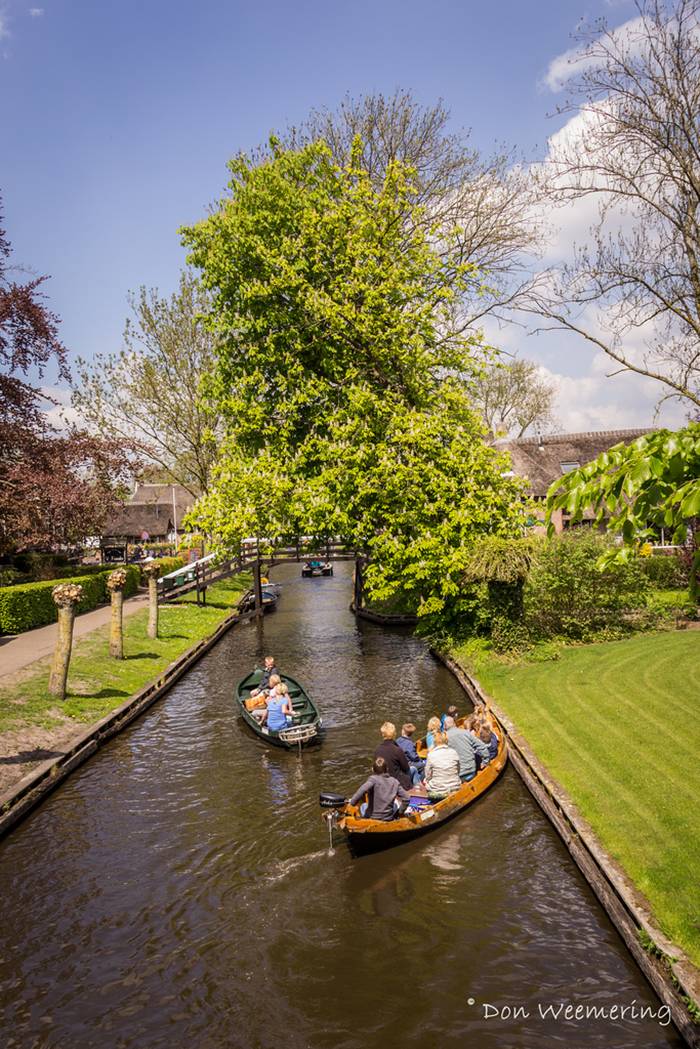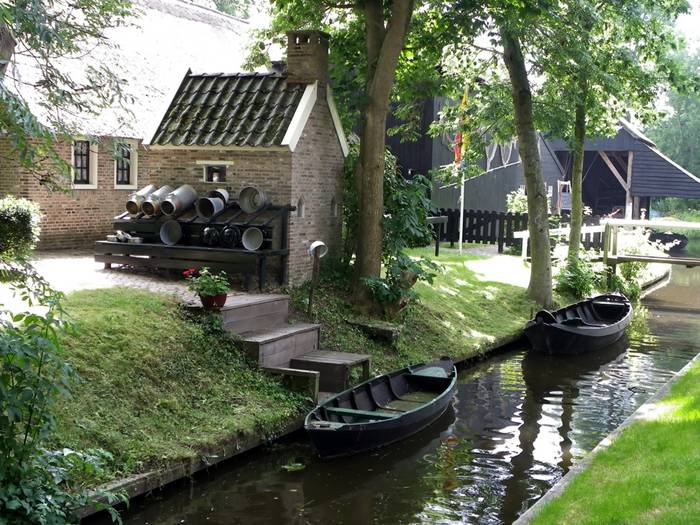Giethoorn —
The Dutch Village With No Roads
Can you imagine a village with no roads?
There is such a place in the Netherlands called Giethoorn (pronounced 'geethorn').
There are no roads and cars have to remain outside the village.
The only access to the stunningly lovely houses in
Giethoorn is by water, or on foot over tiny individual wooden bridges.

Giethoorn is located about 5km south west of Steenwijck in Holland
and became famous - especially after the 1958 Dutch film "Fanfare",
made by Bert Haanstra, was set there. Giethoorn is now an
internationally known tourist attraction in the Netherlands.

Giethoorn is called the Venice of the Netherlands because about
7.5km of canals run through the little village. Some 50 little
wooden bridges span the canals. It was founded in around
1230 and originally called Geytenhorn, which over time has become Giethoorn.

All traffic has to go over the water, and it is done in so-called "punters", called 'whisper-boats' as they are
driven by an electric motor, so they barely disturb the peace and quiet in this scenic little village.

The canals are only about 1m deep and were dug out to transport
peat, the digging of which resulted in many ponds and shallow lakes,
called 'Wieden'. Many houses have been built on islands and are only
reachable over wooden bridges.

Most houses have thatched roofs, the marshy areas providing
a lot of reed. In former days only rich people had tiled roofs,
for tiles were much more expensive than reed, but now
it's the other way round. Having a thatched roof costs a lot more
money than having it covered with tiles.

The unique look of this village of 2,620 people has to do with
early peat mining in the area. Little did they know that what
they built out of necessity would eventually become a world
renowned tourist destination. This is a very picturesque
place to visit, harking back to an earlier time in
history when everything was done at a much more
gentle pace. Just soaking up the peaceful atmosphere is
therapeutic. You really should pay the place a visit.















No comments:
Post a Comment